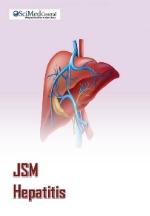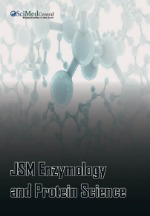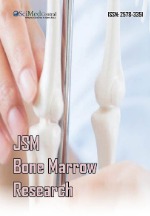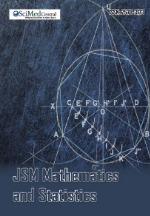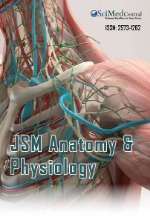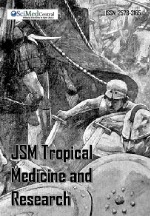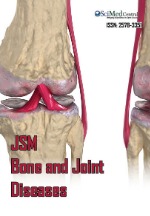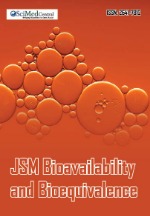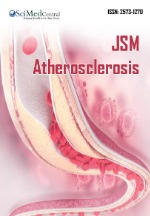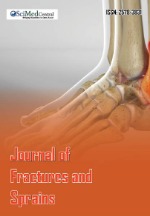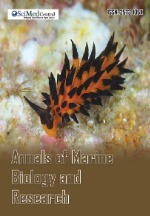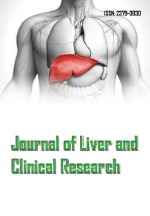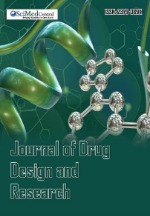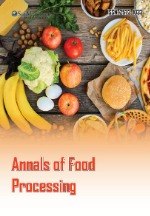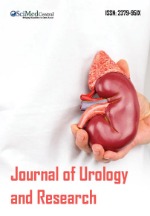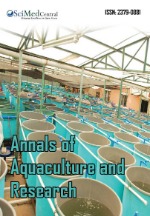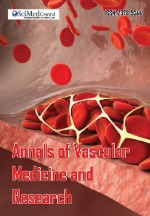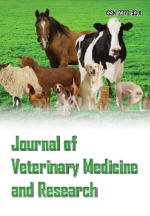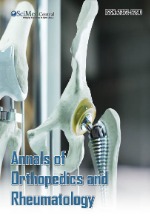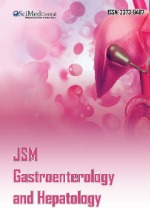Suggestive Evidence Indicates Organic Chicken has a Greater Amount of Protein with the Full Range of Essential Amino Acids
- 1. Santa Monica College, USA
- 2. Department of Medicine, David Geffen School of Medicine at UCLA, USA
- 3. Department of Molecular, Cell, and Developmental Biology, UCLA, USA
- 4. Independent Scholar, USA
- 5. Learning Assistance Center, California State University, USA
- 6. Department of Community Health Sciences, UCLA Fielding School of Public Health, USA
Abstract
This pilot study introduces the idea that organic has more high quality protein than conventional chicken meat. We specifically hypothesize that organic chicken has a higher density of actin and myosin contractile proteins than conventional chicken. Innovatively assessing contractile protein density with a marinade assay in 46 samples (19 conventional and 27 organic) across three trials, we measured depth of marinade penetration with a digital microscope and compared mean differences with a t-test (between group difference in means was 78 µm ± 54.64 µm). The calculated t-test value of 1.43 is highly statistically significant by pilot study standards. This study provides preliminary evidence that organic chicken has a higher density of actin and myosin contractile proteins. Further research with advanced biochemistry techniques is advocated because consumption of food with the full range of essential amino acids may lead to a more complete diet.
Keywords
• Organic food
• Diet
• Food and nutrition
• Protein
• Chicken
• Diet
Citation
Johnston ED, Taw L, Lovick JK, Johnston M, Burns P, et al. (2016) Suggestive Evidence Indicates Organic Chicken has a Greater Amount of Protein with the Full Range of Essential Amino Acids. J Hum Nutr Food Sci 4(3): 1091.
INTRODUCTION
People in the United States are purchasing more and more organic products: $3.6 billion dollars in 1997 increased to nearly $40 billion dollars in 2014 [1]. With passage of the Organic Foods Production Act of 1990, the United States government began introducing regulations on organic products [2]. For producers to market their chickens as with an USDA-certified Organic label, the producers must meet specific USDA requirements, [3] with two of the primary ones being that the chickens must have had outdoor access and received organic feed.
To help consumers make more informed purchasing decisions, multiple scientists are calling for more scientific study on the nutrition related health effects of organic versus conventional foods, including meat [4-7]. With good reason, as existing research is very limited, both in number of studies and especially scope. For example, 2012 Annals of Internal Medicine systematic review [8] only reports two known differences between organic and conventional chicken meat that impact human health. First, conventional and organic chicken meat has similar amounts of bacterial contamination, but conventional chicken has much greater rates of contamination with antibioticresistant bacteria. Second, organic chicken meat has more ω -3 fatty acids than conventional chicken meat [9,10]. More recently, a 2016 systematic review, specifically on the compositional differences between organic and conventional meat, makes no mention of any studies comparing protein quality in organic and conventional meat [11]. Through our own extensive literature review, we uncovered only one study comparing protein between organic and conventional chicken. Husak and colleagues [12] found organic chicken meat to have a higher percentage of total protein relative to conventional. In this pilot study, our objective is to pioneer the comparison of protein quality in organic versus conventional chicken by innovatively utilizing an assay to secure “proof of concept” evidence.
Protein quality: concept, original hypothesis and innovative assay utilization
Protein is higher quality when it contains more of the essential amino acids as these essential amino acids are necessary for the human body to build protein. This concept is well understood in the nutrition community. For example, the nutrition science definition for protein quality is “a measure of how useful a protein in the diet is for building body protein” [13]. Food containing muscle cells is a common source of essential amino acids. Muscle cells are made of myofibrils that contain actin/myosin rich myofilaments. Actin and myosin are considered higher quality proteins because they have the full range of essential amino acids [14,15].
There are two primary reasons why we expect organic chicken meat to have higher quality protein than conventional chicken meat. First, the USDA requires organic chickens to have outdoor access (while there is no such requirement for conventional chickens) [3]. An outside environment provides more favorable conditions for exercise because chickens have more space to walk, play, run, jump, and flap their wings. Several studies have shown that chickens with outdoor access exhibit more locomotor activity, less resting, less abdominal fat, and a higher percentage of protein [16-20]. Exercise builds up muscles, [21] specifically actin and myosin contractile proteins. While there are very few regulations on conventional chicken feed, the USDA requires producers to provide organic chickens an organic, vegetarian diet [3]. Second, scientists have documented that organic grains have higher quality protein than conventional grains [6]. In short, when standards for raising organic chickens are met, organic chickens are more likely to be physically active and eat foods with higher quality proteins. As a result, chickens would be more likely to develop muscles that contain actin/ myosin rich myofilaments. We frame this idea at the molecular level by hypothesizing that organic chicken have a higher density of actin and myosin relative to conventional chicken.
As an alternative to intensive and expensive technique that directly measure protein quality, we harness a well-known and time tested assay: marinade. Kim and colleagues [22] provide an example of using a marinade assay to assess physiochemical properties, including color and water holding capacity. In this pilot study, we innovatively utilize marinade penetration to gain insight into actin and myosin concentration in myofibrils. Marinades contain salts, as well as acids and alcohols, which act to break down the connective tissue surrounding the myofibrils within muscle cells. Salt is important for softening collagen and separating strands of actin and myosin by breaking down the salt bridges which hold them together. Marinades containing acids and alcohols hydrolyze (via enzymes such as cathepsins) and disrupt collagen cross links in connective tissue [23]. The breakdown action allows marinade to penetrate into the myofibrillar proteins (actin and myosin), which uptake the incoming marinade because of their water holding capacity [24].
Figure (1) illustrates how exposure to marinade reveals a difference in the density of actin and myosin proteins in organic versus conventional chicken. Prior to marinade, muscle bundle cells have space between them (Figure 1A). While soaking in marinade, peripheral cells enlarge due to actin and myosin absorbing the marinade. As multiple cells enlarge, the intercellular matrix decreases until the marinade cannot penetrate any more deeply into the muscle bundle interior (Figure 1B,C). Cells with more actin and myosin will swell more because actin and myosin have a higher water holding capacity [25]. A consequence of hypothesizing that organic chicken cells have a higher concentration of actin and myosin proteins is the following deduction: because organic muscle bundles will lose more intercellular space in peripheral cells, marinade will penetrate more deeply into conventional than organic chicken (Figure 1D).
Figure 1: Marinade acts as a marker of physiochemical properties to reveal that organic chicken has a higher concentration of actin and myosin proteins.
(A) Chicken breast muscle bundles contain connective tissue which surrounds muscle bundle cells (fibers) that enclose myofibrils. Myofibrils are made of units called sarcomeres that contain the contractile proteins actin and myosin. Prior to marinade exposure, muscle bundle cells have extra-cellular matrix space between them. (B) In addition to water, marinade contains salts, acids, and alcohols which break down connective tissue (both those of the muscle cells and those of the myofibrils). Salt softens collagen; acids and alcohols hydrolyze and disrupt connective tissue collagen cross links. This break-down action allows marinade to penetrate into the myofibrillar proteins (actin and myosin). (C) Due to their higher water holding capacity, actin and myosin proteins inside the cellular myofibrils take up the marinade and as a result the cell swells. (D) Model for using marinade assay to assess protein concentration in chicken. Muscle bundles take up the marinade (light brown) at different levels depending on the amount of actin and myosin present. Organic chicken contains more actin and myosin and will only absorb marinade in the most peripheral cells (center). Conventional chicken contains less actin and myosin and will take up more of the marinade (right).
MATERIALS AND METHODS
Reagents
Our test reagents, as found in marinade, are acid and salt. To ensure results are due to general marinade properties rather than a specific product formulation, we used different marinade brands for each of the three trials. Variation in the number of active agents across marinade brands allows for possible insight into the effectiveness of different marinade assays in revealing protein concentration differences [27].
The first trial marinade (Trader Joe San’s Soyaki Sauce) contained the acids soy sauce, citric acid, and white vinegar. The full list of ingredients is: soy sauce (water, wheat, soy beans, salt), sugar, garlic puree (garlic, water, citric acid), sesame seeds, soy bean oil, ginger puree, white vinegar, soy powder (soy beans, salt, wheat, maltodextrin), sesame oil, garlic, onions, onion powder, ginger powder. The volume of marinade sauce per bottle was 21 ounces, the serving size was 1 tablespoon, and there was 490 milligrams of sodium per serving.
In the second trial (Veri Veri Teriyaki Marinade and Sauce), the marinade’s acid was soy sauce. The full list of ingredients is: soy sauce (water, wheat, soy beans, salt), sugar, expeller pressed vegetable oil (soy bean and/or canola), dried onion, sesame seeds, dried garlic, ginger puree (ginger, water), expeller pressed sesame oil, dried ginger. The volume of marinade sauce per bottle is also 21 ounces, the serving size was 1 tablespoon, and there was 590 milligrams of sodium per serving.
For the third trial (Kikkoman Marinade Sauce), the marinade’s acid was vinegar. The full list of ingredients is: naturally brewed soy sauce (water, wheat, soy beans, salt), wine, high fructose corn syrup, water, vinegar, salt, spices, onion powder, succinic acid, garlic powder, sodium benzoate: less than 1/10 of 1% as a preservative. The volume of marinade sauce per bottle was 20 ounces, the serving size was 1 tablespoon, and there was 610 milligrams of sodium per serving.
Samples and specimens
In this study, we compare two different groups of chicken meat samples, one raised conventionally and one raised organically. Following existing research, [12] we report results with the understanding that the genotypes of organic and conventional chickens are similar. We define conventional as our control group and organic as our treatment group ScopeImage. This approach is similar to exercise studies in which health researchers routinely compare an exercise-based treatment to a no exercise control [26]. As more people have adopted a sedentary lifestyle in recent decades, this is viewed as the control situation; the group which exercises more is then termed the treatment group. Similarly, we consider the sample of organic chicken meat to be the treatment.
Our samples were obtained from six over-the-counter packages of boneless and skinless chicken (three each for our organic and control groups). Package weight varied only slightly. We conducted three trials. The first had nine organic and five conventional specimens; the second, eight organic and five conventional; and the third had ten organic and nine conventional (27 organic and 19 conventional in all). In the first two trials, the organic specimens were chicken tenders (pectoralis minor), while the conventional specimens were chicken breasts (pectoralis major). We discarded specimens unusually small and found no unusually large ones. Chicken tenders and chicken breasts are skeletal muscles important for wing movement located in the chicken’s upper chest, where tenders are small triangular pieces of tissue which lie directly beneath and are connected to the breasts. The length of the chicken breasts and tenders are essentially the same; however, breasts tend to be wider. Both chicken breasts and tenders have a thickness of approximately 19 milliliters. We controlled for all three factors by using chicken tenders as the specimens for both treatment and control groups in the third trial.
Assay
The assay is to marinade the chicken breasts. To find the outcome, we measured penetration levels. The marinade process was standardized as follows: (1) place organic and conventional chicken breasts into separate plastic containers, (2) pour the same amount of marinade sauce onto them (one bottle), and (3) put an airtight lid on the container. The containers were then left out in room temperature for about 2 hours. Barnard [28] points out that beyond 2 hours, chicken meat tissues break down. In other words, marinade reaches its maximal penetration at 2 hours.
Imaging and measuring marinade penetration
To assess marinade penetration levels, we measured with a digital microscope (OMAX LED 40X-2000X Digital Binocular Biological Compound Microscope with Built-in 3.0MP USB Camera) plugged into a computer with the Windows 8.1 operating system and ScopeImage 9.0 (x3) software. Working with the understanding that actin and myosin proteins are distributed relatively evenly across chicken skeletal muscle, we obtained a single micro-section (approximately 0.75 millimeters) from the center of each specimen. We micro-sectioned from the center of the specimen because marinade saturation towards the ends would mask differences in protein concentration. Focus features of the microscope were used to identify and minimize differences in measurement due to variability in micro-sections. From the specimen cross-section, we selected the area with the maximum amount of penetration for measurement. As yet another step towards achieving uniform measure across all images, we used Scope Image to apply a line function that anchored a starting point at the beginning of the marinade penetration and ended at the end of the darkest band of penetration.
Randomization and blinding
We implemented a number of procedures to ensure and improve quality. To reduce bias, we randomized the order of measurement for marinade penetration in the second and third trials. One example of a bias is that fatigue might lead to greater measurement error. Randomization was accomplished using coin flips. We sequenced and selected specimens for micro-sectioning and mounting according to a random sequence chart. A code such as H1 was written onto the microscope slide. To ensure the measurer did not know the chicken type, we separately recorded specimen details. Two quality control steps were to (1) ensure the line measuring penetration was perpendicular to the edge of the chicken meat and (2) to call for measurement review as needed.
We loaded all study images, along with their line measures, into Google Drive. We then read measurements from those Google Drive images and entered them into an Excel 2013 spreadsheet as integers on a micrometer scale. To reduce the possibility of errors (whether from fat fingering, reading a measure from the incorrect image, or even just misreading the measurement), we implemented a manual double key entry approach. Towards this end, we created two separate data tables from scratch and compared to identify and correct any discrepancies. In reviewing extreme observations, we found two questionable. Two authors collectively re-measured and corrected.
Data analysis
We employ a standard bio-statistical analysis technique, namely a two sample t-test, to compare the mean values of marinade penetration into organic and conventional chicken breasts [29]. Since the groups had unequal variance and we used a Welch’s t-test (rather than a Student’s t-test). Because the hypothesis states that marinade will penetrate further into conventional chicken, we employed a one-tailed t-test. We utilized the Lee team [30] conventions for pilot study significance levels (α) as either 0.25 or 0.15 are utilized.
RESULTS AND DISCUSSION
To build familiarity with how we use a marinade assay to measure protein quality (actin/myosin concentration), we begin with data pooled across control and treatment. The box plot labelled “Overall” in Figure (2) summarizes all trial data (n=46).
Figure 2: Boxplot comparisons of results from the marinade penetration assay Protein quality was analyzed via the marinade penetration assay.
Measurements were taken on one cross-section per chicken breasts (where breasts had been marinated at room temperature for two hours). The data are displayed graphically in box plots with the first and third quartiles defining the bottom and top of the box. The line inside the box is the median. The whiskers extend from the ends of the box outside to the adjacent values (the values closest to 1.5 multiplying the interquartile range
The highest measure of marinade penetration in a cross-section is 948 micrometers and the smallest is 217 micrometers (μm). The median amount is 667 μm; the first and third quartiles are 506 μm and 796.5 μm. There are no outliers. The quartile with the highest measurements (796.5 μm to 948 μm) is composed of cross-sections from chickens that would have had the least amount of contractile proteins. Conversely, the quartile with the lowest measurements (217 μm to 506 μm) would correspond to chickens with the greatest amount of contractile proteins. The range of the lowest quartile (506 μm -217 μm =289 μm) is much greater than the range of the highest quartile (948 μm -796.5 μm =151.5 μm). Examining differences in contractile proteins overall, without regard to a distinction between organic versus conventional chickens makes apparent the following point: among chickens that exercise less, there is little difference in contractile proteins; however, among chickens that exercise more, there is greater variation in contractile proteins. In other words, there is little variation in the amount of exercise when there is little exercise; but, more exercise results in more variation.
Comparing control versus treatment group boxplots in Figure (2) shows conventional chicken breasts to have less variation in marinade penetration measurements than organic chicken breasts. While the range of the first quartiles is essentially the same, the treatment group has larger ranges for the second and third quartiles and the control group has a somewhat larger range for the fourth quartile. Comparing statistical dispersion via boxplots illuminates the way in which the standards for greater opportunities of organic chickens to exercise (because of outdoor access) and eating food with higher quality protein produces a greater range of contractile protein density: differentiation more prominently occurs amongst the chickens falling inside the interquartile ranges (IQR). Because a difference in IQRs (rather than a difference in the distributional tails) drives the difference in statistical dispersion, statistical tests comparing means legitimately shed light on group differences.
Figure [3] graphically displays the data in the form of a bar chart with errors.
Figure 3: Comparison of control (conventional) versus treatment (organic) results on the marinade penetration assay
The control group (conventional) is composed of chickens raised according to standard USDA regulations. The treatment group (organic) were chickens treated with more favorable exercise conditions (outdoor access) and provided more nutritious food (organic feed has higher quality protein). Protein quality difference between control (conventional) and treatment (organic) groups was analyzed via the marinade penetration assay. Means are graphically represented with bar charts having error bars corresponding to ± 1 SEM. The control (conventional) group has n = 19; the treatment (organic) group has n =27. Aligned with pilot study conventions for assessing if the pilot study results merit additional, more rigorous testing, we denote P< 0.25 as * and P < 0.15 as ** (Lee et al 2014).
Table (1) numerically presents the corresponding results with a one-tailed Welch’s (heteroscedastic) t-test. This t-test compares the means (601 μm versus 679 μm) in a way that not only accounts for measurement and other random error but also unequal variances. The calculated t-test value of 1.43 and associated p-value of 0.08 is significant by pilot study standards (Lee et al., 2014). Even if the statistical test was reworked to be two-tailed, testing if organic and conventional chicken have different protein structures, the result would remain statistically significant by pilot study standards.
|
Table 1: Means, standard deviations, standard error, and t-test. |
|||
|
Statistic |
Control (Conventional) |
Treatment (Organic) |
Overall |
|
Mean |
679 μm |
601 μm |
|
|
Standard deviation |
166 μm |
204 μm |
|
|
Standard error |
|
|
54.64 μm |
|
T-Test [Welch’s] (p-value) |
|
|
1.43 (0.08) |
|
Aligned with pilot study conventions for assessing if the pilot study results merit additional, more rigorous testing, we denote P < 0.25 as * and P < 0.15 as ** (Lee et al., 2014). |
|||
The statistical evidence that organic chicken meat exhibits less marinade penetration suggests that organic chicken meat has higher quality protein and this finding aligns with a classic molecular biology study on exercise and protein concentration. Helander [31] compared exercised versus sedentary guinea pigs to show that exercised guinea pigs have higher concentrations of myofilamental protein. Whereas the marinade penetration assay indirectly assesses the concentration of actin and myosin contractile proteins, the Helander [31] study directly assessed nitrogen concentration to show that more exercise correlates with higher levels of myofilamental protein concentration. In short, our statistically significant mean difference tightly dovetails with highly credible published research showing that more exercise correlates with higher concentrations of myofilamental proteins and provides compelling preliminary evidence that organic chickens have a higher density of contractile proteins because they are raised according to organic standards.
Our research comparing the protein quality of organic versus conventional chicken meat engages a larger topic related to the ways in which dietary choices and food consumption behaviors impact health. For multiple reasons, consumers are increasingly purchasing organic foods [1]. Reasons include a desire to reduce exposure to harmful pesticides, eliminate ingestion of food additives, promote environmental sustainability, and consumption of tastier food. Yet the answer to the enduring question of whether people who consume organic versus conventional foods will be healthier remains elusive. Early [10] and recent [9] studies have demonstrated that systems of organic free-range rearing, which include feeds and grazing, influence the quality of meat an animal produces as indicated by its favorable polyunsaturated fatty acid and antioxidant content. The results of this study further suggest organic chicken meat also consists of a greater density of high quality protein containing essential amino acids. Considering these facts as a whole, the research evidence is becoming more suggestive that people who eat organic foods will achieve higher nutritional value and likely improved health outcomes.
CONCLUSION
In this paper, we respond to the call, voiced by several scientists, for more scientific research comparing organic to conventional food [4-9]. In pioneering the comparative study of protein quality in organic versus conventional chicken, we specified the hypothesis that organic chicken meat has more protein with a wider variety of essential amino acids. We provide original experimental evidence that supports the hypothesis.
Out pilot study have a few limitations. The first trial had the largest between groups difference. Here, an assay with a larger number of active agents was used, the conventional chicken had a few more minutes of marinade time and there was neither blinding nor randomization. The second limitation is that in the first and second trials, the organic specimens were narrower (tenders) while the conventional specimens were wider (breasts). However, in all three trials, the mean amount of marinade penetration in conventional chicken was greater than that of organic chicken. A limitation which spans all trials is that marinade penetration is an indirect assessment. The inexpensive techniques employed in this paper provide encouragement for more advanced methods comparing amino acid profiles of organic and conventional chicken.
In conclusion, our pilot study presents the hypothesis that relative to conventional chicken, organic chicken has a higher concentration of actin and myosin contractile proteins, and therefore more protein with the full range of essential amino acids. Our preliminary evidence indicates the hypothesis merits further investigation in a more comprehensive biochemical study.
ACKNOWLEDGEMENTS
Elisha Johnston thanks the Los Angeles County Science & Engineering Fair, the California State Science Fair, and the American Association of Clinical Chemistry for encouragement.
REFERENCES
1. Organic Trade Association. State of the Industry. 2015.
3. United States Department of Agriculture. Organic Livestock Requirements. 2013.
13. Grosvenor MB, Smolin LA. Nutrition: from science to life. 2002. San Diego: Harcourt College Publishers.
23. Brewer MS. Water-holding capacity. In Dikeman M, Carrick D, editors. Encyclopedia of meat sciences, volume 1, 2nd edition.) Boston: Elsevier. 2014; 274-282.
28. Barnard M. Marinades: the secret of great grilling. New York: HarperCollins Publishers, Inc. 1997
29. Daniel WE. Biostatistics: A foundation for analysis in the health sciences. 8th edn. Chicago: John Wiley & Sons, Inc. 2005.

















